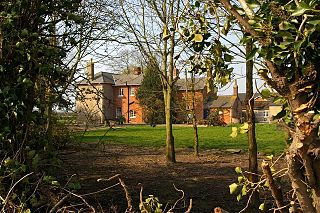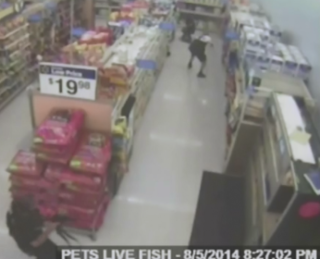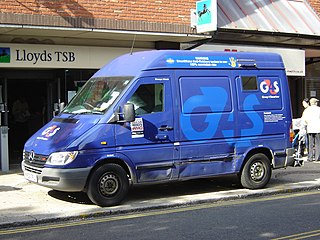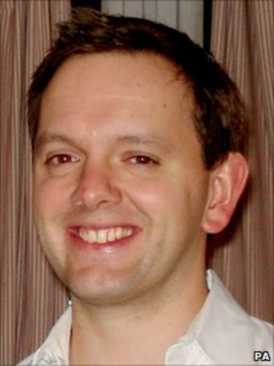
John Allen Muhammad was an American convicted spree killer who, along with his partner and accomplice Lee Boyd Malvo, carried out the D.C. sniper attacks of October 2002, killing seventeen people. Muhammad and Malvo were arrested in connection with the attacks on October 24, 2002, following tips from alert citizens.

The White House Farm murders took place near the village of Tolleshunt D'Arcy, Essex, England, during the night of 6–7 August 1985. Nevill and June Bamber were shot and killed inside their farmhouse at White House Farm along with their adopted daughter, Sheila Caffell, and Sheila's six-year-old twin sons, Daniel and Nicholas Caffell. The only surviving member of the immediate family was the adopted son, Jeremy Bamber, then aged 24, who said he had been at home a few miles away when the shooting took place.
Henry Bruce Stanley was a Scottish painter and decorator who was shot dead by the Metropolitan Police in London in contentious circumstances. Initially his death was recorded with an open verdict, before being ruled as unlawful killing by a jury on appeal and finally returned to an open verdict by the High Court.
The Walsh Street police shootings were the 1988 murders of two Victoria Police officers: Constables Steven Tynan, 22, and Damian Eyre, 20.

James Ashley was a British man who, while unarmed and naked, was shot dead by police in his flat in St Leonards-on-Sea, East Sussex, on 15 January 1998. Armed officers raided the building on the suspicion that Ashley kept a firearm and a quantity of cocaine there, and to arrest him and another man in connection with a stabbing. Neither a firearm nor a significant quantity of drugs was found, the other man was not present, and it later emerged that Ashley was not implicated in the stabbing. Ashley, likely woken by the noise of the raid, was out of bed when an armed police officer entered his bedroom. On seeing the officer, Ashley raised one arm and the officer reacted by firing a single shot. Later that morning, Sussex Police chief constable Paul Whitehouse held a press conference in which he praised the conduct of the operation.
During the Troubles in Northern Ireland, British security forces were accused by some of operating a "shoot-to-kill" policy, under which suspected paramilitary members were killed without an attempt being made to arrest them. This alleged policy was claimed to be most frequently directed against suspected members of Irish republican paramilitary organisations, such as the Provisional Irish Republican Army (IRA), Official Irish Republican Army (OIRA) and Irish National Liberation Army (INLA). According to a 1985 inquiry by a team of international lawyers titled Shoot to Kill?, undercover security force units were "trained to shoot to kill even where killing is not legally justifiable and where alternative tactics could and should be used." The British government, including the Northern Ireland Office, consistently denied that there was ever a "shoot-to-kill" policy, stating that "like everyone else, the security forces must obey the law and are answerable to the courts for their actions."

The Service de police de Laval is the municipal police force of the city of Laval, Quebec, north of Montreal. The service consists of approximately 800 officers and civilian employees.

Jean Charles da Silva e de Menezes was a Brazilian man killed by officers of the London Metropolitan Police Service at Stockwell station on the London Underground, after he was wrongly deemed to be one of the fugitives involved in the previous day's failed bombing attempts. These events took place two weeks after the London bombings of 7 July 2005, in which 52 people were killed.

Mark Duggan, a 29-year-old black British man, was shot dead by police in Tottenham, North London on 4 August 2011. The Metropolitan Police stated that officers were attempting to arrest Duggan on suspicion of planning an attack and that he was in possession of a handgun. Duggan died from a gunshot wound to the chest. The circumstances of Duggan's death resulted in public protests in Tottenham, which led to conflict with police and escalated into riots across London and other English cities.
Anthony Grainger was shot and killed by an armed Greater Manchester Police officer in Culcheth, Cheshire, England, on 3 March 2012. At the time, Grainger was unarmed.

The Moncton shootings were a string of shootings that took place on June 4, 2014, in Moncton, in the Canadian province of New Brunswick. The perpetrator, Justin Bourque, a 24-year-old Moncton resident, walked around the northern area of the city and shot five officers from the Royal Canadian Mounted Police (RCMP), killing three and severely injuring two. A manhunt for Bourque was launched and continued overnight and into June 5. On June 6, Bourque was found and taken into custody, ending a manhunt that lasted over 28 hours. The shooting was both Moncton's first homicide since 2010 and the deadliest attack on the RCMP since the Mayerthorpe tragedy in 2005, which left four RCMP officers dead. Bourque intended for the shootings to trigger a rebellion against the Canadian government. He was sentenced to 75 years in prison, with no eligibility for parole until after serving 25 years.

On November 22, 2014, Tamir E. Rice, a twelve year old African-American boy, was killed in Cleveland, Ohio, by Timothy Loehmann, a 26-year-old white patrolman with the Cleveland Division of Police (CDP). Rice was carrying a replica toy gun; Loehmann shot him almost immediately upon arriving on the scene. Loehmann and his partner, 46-year-old Frank Garmback, had been responding to a dispatch call regarding a male who had a gun. A caller reported that a male was pointing "a pistol" at random people at the Cudell Recreation Center, a park in Cleveland's Public Works Department. The caller twice told to the dispatcher that the pistol was "probably fake", and also stated that the male was "probably a juvenile", but the dispatcher did not relay either of these statements to Loehmann and Garmback.

The killing of John Crawford III occurred on August 5, 2014. Crawford was a 22-year-old African-American man shot and killed by a police officer in a Walmart store in Beavercreek, Ohio, near Dayton, while he was holding a BB gun that was for sale in the store. The shooting was captured on surveillance video and led to protests from groups including the NAACP and the Black Lives Matter movement.

On July 1, 2015, 32-year-old Kathryn "Kate" Steinle was shot and killed while walking with her father and a friend along Pier 14 in the Embarcadero district of San Francisco. She was hit in the back by a single bullet. The man who fired the gun, José Inez García Zárate, said he had found it moments before, wrapped in cloth beneath a bench on which he was sitting, and that when he picked it up the weapon went off. The shot ricocheted off the concrete deck of the pier and struck the victim, who was about 90 feet (27m) away. Steinle died two hours later in a hospital as a result of her injuries.
Anthony Lamar Smith was a 24-year-old African American man from St. Louis, Missouri, who was shot and killed by then St. Louis Police officer Jason Stockley following a car chase on December 20, 2011. On September 15, 2017, Stockley was found not guilty of first-degree murder, and protests erupted in St. Louis.
The killing of Yassar Yaqub occurred on the evening of 2 January 2017 near Huddersfield, West Yorkshire, England. Yaqub was a passenger in a car stopped by police on a sliproad near junction 24 of the M62 motorway and was fatally shot by a West Yorkshire Police firearms officer.

The Chandler's Ford shooting was the shooting of armed robbers in the town of Chandler's Ford, Hampshire, in southern England, on 13 September 2007. Two men were shot dead by Metropolitan Police officers while they were robbing a cash-in-transit van at gunpoint. The Metropolitan Police's Flying Squad had been tracking a gang of armed robbers from South London who were estimated to have stolen £500,000 from 18 robberies of security vans. The Flying Squad received intelligence that the gang intended to target the HSBC branch in Chandler's Ford and planned to lie in wait and apprehend the suspects as they attempted the robbery.

Mark Saunders was a British barrister who was shot dead by police on 6 May 2008 after a five-hour siege at his home in Markham Square in Chelsea, London. Saunders was a successful divorce lawyer who struggled with depression and alcoholism. He had been behaving erratically and drinking heavily in the hours before the incident. Neighbours called the police after Saunders repeatedly fired a shotgun from a window shortly before 17:00. When armed police officers arrived, Saunders fired at their vehicle and the siege began. More armed officers arrived and took up positions in surrounding buildings and on the street. Saunders fired on two more occasions and the police returned fire, slightly wounding him. Around 20 minutes after the previous round of shooting, just after 21:30, Saunders waved the shotgun out of a window. As he lowered it in the direction of a group of police officers, seven officers fired eleven shots, of which at least five struck him. Police entered his flat minutes later and Saunders was taken to a waiting ambulance where he was pronounced dead.
Jermaine Baker was shot dead by a Metropolitan Police officer in Wood Green, London on 11 December 2015. Baker, who was unarmed, was shot during a police operation to prevent a suspected plot to free two prisoners being transported to Wood Green Crown Court. Baker's death led to an investigation by the Independent Police Complaints Commission, which was continued by its successor body the Independent Office for Police Conduct, and a criminal investigation which did not result in criminal charges being brought against the officer who shot Baker. A public inquiry into Baker's death launched in June 2021 and reported in July 2022, finding that the police operation in which Baker was killed had involved a series of failings, but that Baker's killing was nonetheless lawful.












